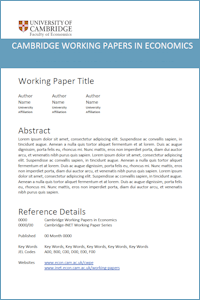
Simshauser, P.
The regulation of electricity transmission in Australia’s National Electricity Market: user charges, investment and access
CWPE2340
Abstract: The creation of Australia’s National Electricity Market and the associated structural reforms triggered the separation of transmission from generation during the 1990s. The economic framework which governs electricity networks is largely based on the British model and Littlechild’s (1983) RPI-X incentive regulation. This framework was designed to correct over-capacity, a characteristic of the pre-reform era. The NEM experienced one episode of network over-investment (viz. 2007-2015) but there is no evidence of regulatory failure per se. Investment mistakes in retrospect were driven by policy error and forecast error – noting this period was preceded by very strong growth in electricity demand, and then coincided with the Global Financial Crisis (2007-2009) and Australia’s rapid uptake of rooftop solar PV – the effects of which were virtually unforecastable, ex ante. From 2015, the regulatory framework proved effective in correcting the 2007-2015 cycle with electricity networks now considered the more stable part of the energy supply chain. However, while NEM regulation has been effective in dealing with episodes of overcapacity, as to whether the rigid and highly prescriptive Rules are capable of dealing with the accelerating task of decarbonisation is an open question. NEM State Governments are legislating outside the Rules to meet their own policy objectives and timeframes.
Keywords: Microeconomic reform, electricity transmission, network regulation
JEL Codes: D52 D53 G12 L94. Q40
PDF: https://www.econ.cam.ac.uk/research-files/repec/cam/pdf/cwpe2340.pdf 
EPRG Paper Link: 2311
Open Access Link: https://doi.org/10.17863/CAM.105499
